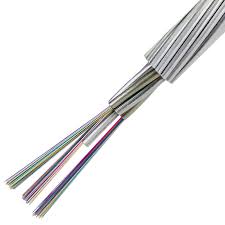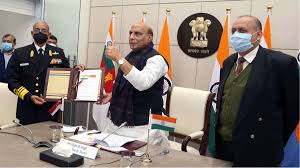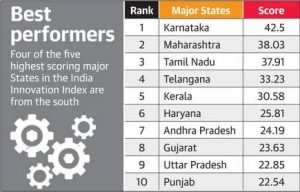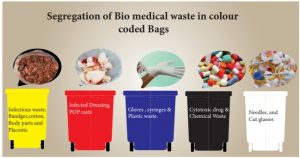Today Current Affairs: 21st January 2021 for UPSC IAS exams, State PSC exams, SSC CGL, State SSC, RRB, Railways, Banking Exam & IBPS, etc
Table of Contents
OPTICAL GROUND WIRE (OPGW):

To improve telecom connectivity in hilly areas, Power Grid Corporation of India Limited (POWERGRID), has recently signed an agreement with Himachal Pradesh State Electricity Board Ltd. (HPSEBL) in Shimla (H.P.) for utilization of 500 Kms of OPGW Telecom network.
- Through this OPGW Network, Telecom Service providers will be able to provide uninterrupted mobile/Internet services to the people of the state.
- An optical ground wire is also known as an OPGW or, in the IEEE standard, an optical fiber composite overhead ground wire.
- It is a type of cable that is used in overhead power lines. Such cable combines the functions of grounding and communications.
- OPGW is an optical fiber composite ground wire.
- This cable contains a tubular structure having one or more optical fiber and surrounded by layers of aluminum and steel wires.
- This layer of aluminum and steel wires serves to connect the tower to the ground. The optical fiber within the cable is used for the high-speed data telemetry between the utilities or sold to some third parties for high-speed fiber interconnection between the cities.
- POWERGRID, a ‘Maharatna’ CPSE under the Ministry of Power, Government of India and Central Transmission Utility (CTU) of India, is India’s principal power transmission company and also one of the largest power transmission utilities in the world.
Faecal sludge and septage management (FSSM):

NITI Aayog released a book on faecal sludge and septage management (FSSM) in urban areas.
- Jointly developed with National Faecal Sludge and Septage Management (NFSSM) Alliance, the book presents 27 case studies across 10 states and various service and business models adopted by Indian cities while implementing FSSM initiatives.
- The report mentions that about 60% of urban households rely on onsite sanitation systems, which require dedicated planning for management of waste collected in these systems’ containment structures.
- Accordingly, FSSM planning prioritizes human excreta management, a waste stream with a high potential for spreading diseases.
- Considering the importance of FSSM solutions, the Ministry of Housing and Urban Affairs came up with the national policy on FSSM in 2017. More than 24 states have adopted it and 12 of them have come up with their own policies.’
- Universal access to toilets was achieved in urban India with the construction of 66 lakh household toilets and more than 6 lakh community and public toilets.
- After achieving the target of ‘Open-Defecation-Free’ (ODF), India has now moved towards becoming ODF+ and ODF++.
- These targets go beyond the concept of access to sanitation and aim for safely managed sanitation systems, with adequate treatment and safe disposal of toilet waste.
Ratle Hydro Electric (HE) Project:

The Union Cabinet has given its approval for the investment of Rs.5281.94 crore for 850 MW Ratle Hydro Electric (HE) Project.
- It will be located on river Chenab, in Kishtwar district of Union Territory of Jammu and Kashmir.
- It will be implemented by a new Joint Venture Company (JVC) to be incorporated between National Hydroelectric Power Corporation (NHPC) and Jammu & Kashmir State Power Development Corporation Ltd (JKSPDC) with equity contribution of 51% and 49% respectively.
- The Ratle Hydro Electric Project shall be commissioned within a span of 60 months.
- The Power generated from the Project will help in providing balancing of Grid and will improve the power supply position.
- Further, Union Territory of Jammu and Kashmir will be benefitted by getting free power worth Rs. 5289 crore and through levy of Water Usage Charges worth Rs.9581 crore from Ratle Hydro Electric Project, during project life cycle of 40 years.
5th Defence Ministers’ Dialogue (DMD) between India and Singapore:

The 5th Defence Ministers’ Dialogue (DMD) between India and Singapore was successfully held on 20 January 2021 through a video conference.
- At this 5th DMD, both Ministers witnessed the signing of the Implementing Agreement on Submarine Rescue Support and Cooperation between the two Navies.
- The Ministers further welcomed the implementing agreement on Humanitarian Assistance and Disaster Relief (HADR) cooperation in August 2020 for the two Armed Forces to have closer operational collaboration in response to disasters.
- The Ministers were pleased that the Indian Navy and Singapore Navy successfully conducted the 27th edition of Singapore-India Maritime Bilateral Exercise (SIMBEX) and also participated in the second edition of the Singapore-India-Thailand Maritime Exercise (SITMEX); both held in November 2020.
- Rajnath Singh reaffirmed ASEAN centrality in the regional security architecture and pledged India’s support to all endeavours of the ASEAN Defence Ministers’ Meeting (ADMM)-Plus.
- The cyber agencies of both armed forces have also stepped up engagements.
Geo-Hazard management:

Defense Research and Development Organisation (DRDO) has entered into a framework MoU with the Ministry of Road Transport & Highways (MoRTH) to strengthen collaboration on sustainable Geo-Hazard management.
- DRDO’s Defence Geo-Informatics Research Establishment (DGRE) is working for the development of critical technologies for enhancing combat effectiveness in various kinds of terrains and avalanches.
- MoRTH is responsible for development & maintenance of National Highways across the country.
- It has been agreed that the expertise of DGRE will be utilized in providing sustainable mitigation measures to damages caused by landslides, avalanche and other natural factors on various National Highways in the Country.
Dragon fruit:

The Gujarat government has decided to rename the dragon fruit as ‘kamalam’.
- Dragon fruit is the fruit of a species of wild cactus indigenous to South and Central America, where it is called pitaya or pitahaya.
- The fruit’s flesh is usually white or red — although there is a less common yellow pitaya too — and is studded with tiny seeds rather like the kiwifruit.
- The world’s largest producer and exporter of dragon fruit is Vietnam, where the plant was brought by the French in the 19th century. The Vietnamese call it thanh long, which translates to “dragon’s eyes”, believed to be the origin of its common English name.
- Dragon fruit is also cultivated in — apart from its native Latin America — Thailand, Taiwan, China, Australia, Israel, and Sri Lanka.
- It was brought to India in the 1990s, and is grown in Karnataka, Kerala, Tamil Nadu, Maharashtra, Gujarat, Odisha, West Bengal, Andhra Pradesh, and Andaman and Nicobar Islands. It grows in all kinds of soil, and does not require much water.
- According to Chief Minister Vijay Rupani, the fruit’s outer shape resembles a lotus, which is also the election symbol of the BJP. The word ‘kamalam’ is a Sanskrit word and the shape of the fruit does resemble the lotus flower.
- “We have applied for a patent of the dragon fruit to be called ‘kamalam’, Mr. Rupani said at the launch of the Chief Minister Horticulture Development Mission, a scheme to promote horticulture in unproductive land parcels.
India Innovation Index by NITI Aayog:

The second edition of the NITI Aayog’s India Innovation Index has been released.
Performance of various states:
- Karnataka is the most innovative state for the second year in a row.
- Maharashtra pipped Tamil Nadu to the second spot.
- Bihar was featured at the bottom of the list.
About the index:
- The index attempts to create an extensive framework for the continual evaluation of the innovation environment of states and union territories in India and intends to perform the following three functions:
- Ranking of states and UTs based on their index scores.
- Recognizing opportunities and challenges.
- Assisting in tailoring governmental policies to foster innovation.
- The Index is calculated as the average of the scores of its two dimensions – Enablers and Performance.
The Enablers :
- They are the factors that underpin innovative capacities, grouped in five pillars: (1) Human Capital, (2) Investment, (3) Knowledge Workers, (4) Business Environment, and (5) Safety and Legal Environment.
The Performance :
- Are dimension captures benefits that a nation derives from the inputs, divided in two pillars: (6) Knowledge Output and (7) Knowledge Diffusion.
Shaheen-III Missile:

Pakistan has successfully test-fired the Shaheen-III missile.
Shaheen-III Missile of Pakistan:
- It is a nuclear-capable surface-to-surface ballistic missile that can strike targets up to 2,750 km.
- The launch of the missile was aimed at the revalidating various design and technical parameters of the weapon system.
Other Recent Developments:
- China had recently asked India to “objectively” view the Eagle-IX (or Shaheen-IX) military exercise taking place between the Chinese and Pakistani air forces, amid increasing tensions with India.
Some of India’s Ballistic Missiles:
- Shaurya missile,
- Prithvi missile,
- Agni missile,
- Dhanush, etc.
Bio Medical Wastes:

The National Green Tribunal (NGT) has recently directed various authorities to ensure compliance from the biomedical waste management facilities in the country.
- Central Level: The Central Pollution Control Board (CPCB) to ensure strict compliance of biomedical waste management rules and scientific disposal of the waste.
- State Level: The Chief Secretaries of all the States/UTs to oversee compliance and ensure that authorisation is secured by every health care facility in their respective jurisdiction and also there is adherence to the norms.
- District Level: The District Magistrates in accordance with the District Environmental Plans.
Groundwater Contamination: While permitting deep burials, it may be ensured that groundwater contamination does not take place. - Segregation: Ensure that hazardous bio-medical waste is not mixed with the general waste.
- Frequent Violation of Rules: The direction came as a result of regular fines being imposed on various healthcare facilities and biomedical waste treatment facilities
- Earlier Observation: The segregation of Covid-19 biomedical waste from general garbage is a must to avoid further contamination adversely affecting public health.
Bio-Medical Waste Management Rules, 2016
- Biomedical waste is defined as human and animal anatomical waste, treatment apparatus like needles, syringes and other materials used in health care facilities in the process of treatment and research.
- Objective: The objective of the rules is to properly manage the per day bio-medical waste from Healthcare Facilities (HCFs) across the country.
- Ambit: The ambit of the rules has been expanded to include vaccination camps, blood donation camps, surgical camps or any other healthcare activity.
- Phase Out: Chlorinated plastic bags, gloves and blood bags has been phased out within two years starting from March 2016.
- Pre-treatment: Pre-treatment of the laboratory waste, microbiological waste, blood samples and blood bags through disinfection or sterilization on-site in the manner prescribed by the World Health Organization (WHO) or by the National AIDS Control Organisation (NACO).
- Bio-medical waste has been classified into 4 categories instead of the earlier 10 categories to improve the segregation of waste at source.
- Stringent Standards for Pollutants: The rules prescribe more stringent standards for incinerators to reduce the emission of pollutants in the environment.
- The State Government provides the land for setting up common bio-medical waste treatment and disposal facility
Karnataka Prevention of Slaughter and Preservation of Cattle Ordinance, 2020:

Karnataka government has given an undertaking to the High Court that no coercive action will be initiated for transporting cattle in breach of the Cattle Ordinance, 2020 till the relevant rules are brought into force based on the draft rules notified recently.
- The court is hearing PIL petitions challenging the constitutional validity of the Ordinance promulgated recently.
- The government is yet to frame rules prescribing manner of cattle transportation.
- There have been apprehensions about likely prosecution of farmers for transporting cattle within the State even for the exemption granted for bonafide agriculture and animal husbandry.
Controversial Provisions:
- Police officers ranked sub-inspector and above or a competent authority will have the power to search premises and seize cattle and materials used or intended to use to commit the offence.
- Such seizures, if any, will then be reported before the Sub Divisional Magistrate without unreasonable delay.
- It is a cognizable offence, violators can attract three to seven years of imprisonment.
- While a penalty between Rs 50,000 and Rs 5 lakh can be levied for the first offence, second and subsequent offences can attract penalties ranging between Rs 1 lakh and Rs 10 lakh.
Supreme Court Dismissed Aadhaar Review Petitions:

The Supreme Court (SC) has dismissed petitions seeking a review of its 2018 judgment upholding the constitutional validity of the Aadhaar Act (2016).
- In 2018, the SC upheld the country’s biometric identity system and also cleared mandatory Aadhaar enrolment of recipients of government welfare benefits.
- The court, in its verdict, had also approved the passage of Aadhaar law by the Parliament as a money bill, which did not require an approval of the Rajya Sabha.
- Thereafter, review petitions were filed against the judgement.
Issue Involved:
- Whether the decision of the Lok Sabha Speaker under Article 110 (3) of the Constitution to certify a bill as a money bill under Article 110 (1) is final and binding or can be subject to judicial review.
- If the decision is subject to judicial review, whether the Aadhaar Act, 2016 has been correctly certified as a money bill.
SC’s Ruling:
Majority Decision:
- Majority of the bench (i:e 4 out of 5) held that “no case for review” of the 2018 judgment was made and dismissed the petitions.
- The 2019 judgment in Rojer Mathew v South Indian Bank Ltd was not sufficient to press for a reconsideration of the 2018 Aadhaar judgment.
Rojer Mathew v South Indian Bank Ltd 2019:
- The judgment in this case said that the speaker’s decision was not beyond judicial review though the scope was extremely restricted.
- It had also said that the 2018 Aadhaar verdict had not answered conclusively the question as to what constitutes a money Bill under Article 110 (1) and had directed that it be referred to a larger Bench which has not been constituted yet.
Dissenting Judgment:
- One of the five judges dissented with the majority view and said that the 2019 judgment questioning the correctness of the Aadhaar verdict was a relevant fact and that the apex court must wait for the larger bench of seven judges to decide these pertinent issues.
- He also referred to the Sabarimala case where a nine-judge Bench in February 2020 had referred certain questions of law arising in the context of an earlier decision by a five-judge Bench in September 2019 to a larger Bench while keeping the review petitions pending.
- He held that it is a constitutional error to hold at this stage that no ground exists to review the judgment and it would have serious consequences not just for judicial discipline, but also for the ends of justice.
Final Judgement:
- Even as one of the five judges on the bench termed it a “constitutional error,” the SC by a majority verdict has dismissed a clutch of petitions seeking a review of its 2018 judgment that validated the Aadhaar Act.
Veer Savarkar:

An MLC in Uttar Pradesh has demanded that the portrait of Hindu Mahasabha leader Vinayak Damodar Savarkar be removed from the picture gallery of the State Legislative Council saying that the installation of his frame next to those of freedom fighters amounted to an “insult” to them. This has stirred controversy in the state.
Veer Savarkar:
- Born on May 28, 1883, in Bhagur, a city in Maharashtra’s Nashik.
Nationalism and social reforms:
- Formed a youth organization- Mitra Mela, this organization was put into place to bring in national and revolutionary ideas.
He was against foreign goods and propagated the idea of Swadeshi. - He championed atheism and rationality and also disapproved orthodox Hindu belief. In fact, he even dismissed cow worship as superstitious.
- Vinayak Savarkar was the president of Hindu Mahasabha from 1937 to 1943.
- When congress ministries offered resignation on 22nd Oct 1939, Hindu Mahasabha under his leadership cooperated with the Muslim League to form government in provinces like Sindh, Bengal, and NWFP.
- In Pune, Savarkar founded the “Abhinav Bharat Society”.
- He joined Tilak’s Swaraj Party.
- He founded the Free India Society.
- The Society celebrated important dates on the Indian calendar including festivals, freedom movement landmarks, and was dedicated to furthering discussion about Indian freedom.
- He believed and advocated the use of arms to free India from the British and created a network of Indians in England, equipped with weapons.
Important works:
- Book- The History of the War of Indian Independence.
- An armed revolt against the Morley-Minto reform.
- Two-nation theory in his book ‘Hindutva’.




